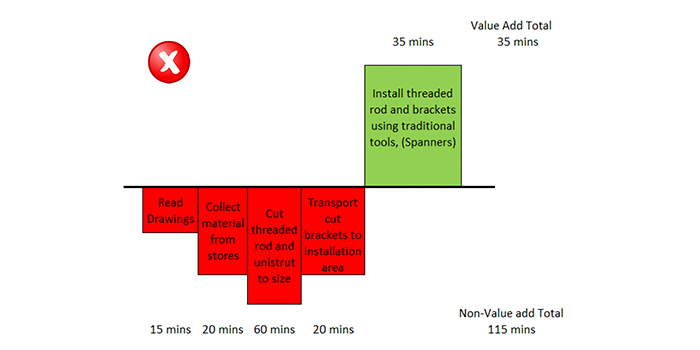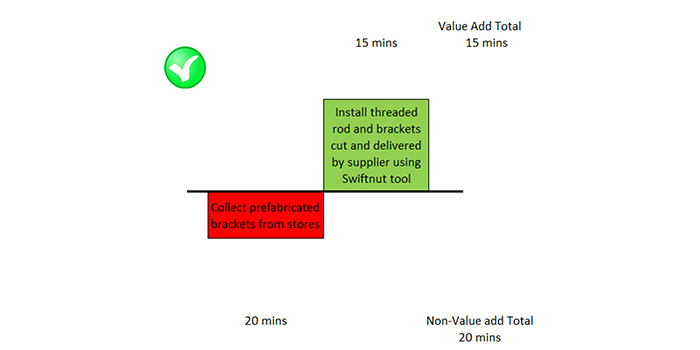Lean Thinking is a dynamic, knowledge driven and customer focused process through which people in a defined enterprise continuously eliminate waste with the goal of creating value.
This is the definition of Lean Thinking as described in MIT’s Lean Aerospace Initiative. “Customer Focused” is the most important part of this statement. The measure of any company’s success is how their customers view them. In Jones Engineering the lions share of our projects are with sustaining customers and this is something we are very proud of. It takes 70% less resources to stay with existing customers than it does to find and create new customers. New customers are always welcome but it is a great reflection on our quality and delivery when existing customers request our services time and time again.
The quality and service that we at Jones Engineering deliver is pivotal in importance to our company. Our program of Continuous Improvement and aiming for Zero Quality Control issues on all our projects, provides a service that customers desire from the outset.
With over 2500 personnel and an annual turnover in excess of €400 million, Jones Engineering is a company that engineers, designers, managers and tradesmen want to work for. Apprentices want to train with us and become Jones Engineering tradesmen. This is a measurement of success in a company that started with the return to Ireland of an immigrant 128 years ago.
Since we began our Lean journey in 2014 we have attended many Lean events around the country. One question is constantly asked at these events and that is: “How do you measure successful Lean implementations in construction?”
The answer is fairly straightforward. Labour is the biggest outlay of resources on any construction project and all projects are subject to both time and material costs. We know from the procurement process the cost of materials, so everything else can be measured in “Man-hours,” the time it takes to carry out an activity. During the tender stage rates are used to price activities in a process, eg: €x charged to complete a weld on specific sized pipe. If there are 200 welds to be completed on this size of pipe then the cost is 200 x €x. When we carry out our waste walks, we identify activities where efficiency is not being maximised and suggest improvements to be trialled that may help.
If we introduce a new initiative or trial “A Better Way” of carrying out a process we measure the old way against the new way and count the “man-hours” saved. This can be illustrated using a Value Stream Map, VSM. A simple graph is drawn using blocks showing Value Adding and Non-value Adding activities measured in man-hours. If the new method shows a saving in man-hours then we will implement the new way.
Above is an illustration of a Value Stream map showing how a simple innovation and the use of Lean Construction methods can dramatically cut the cost of installing a trapeze bracket as per below image.
A trapeze bracket is usually made up of 2 no. pieces of threaded rod and several unistrut cross pieces to carry pipe or cable trays. Before Lean thinking these would be fabricated on site by the project teams.

As per Figure 1 this would involve the following sequence of activities:
For a 3 tiered bracket it could take around 150 mins to fabricate and install using spanners as some of the nuts have to be wound a long way up the threaded rod.

Figure 2 shows the same installation using Lean Construction methods.
This shows a potential saving of 115 mins per trapeze bracket. On some of our projects there could be 100s of these brackets.